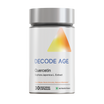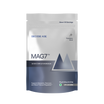Ageing signifies an irreversible decline in physiological function, giving rise to diseases like cardiovascular issues, musculoskeletal disorders, arthritis, neurodegenerative diseases, and cancer. Beyond the physical toll, these age-related diseases pose economic and psychological challenges for both patients and their families. Cellular senescence stands as a key hallmark of ageing, where excessive senescence disrupts tissue regeneration and releases inflammatory factors like the senescence-associated secretory phenotype (SASP), damaging surrounding healthy cells (López-Otín et al., 2013; Baker et al., 2016).
Ageing and Its Effects on the Body
Ageing prompts numerous questions: Why do we age, and how does it affect our cells? Our bodies, intricate living systems with many functions, are prone to cellular mistakes that contribute to overall damage. While chronological age measures the years we live, biological age gauges the age of our cells.
Although not everyone worldwide may have the opportunity to live longer, reaching one's 60s or 70s is a common goal. Globally, countries are witnessing a swift ageing phenomenon— the silver tsunami is upon us. The elderly population is surging, poised to surpass the younger demographic. This shift comes with an increased susceptibility to diseases. Ageing is a universal occurrence, affecting humans and other species alike.
Ageing brings about various conditions, including hearing loss, back and neck pain, osteoarthritis, pulmonary disease, depression, diabetes, and dementia. In humans, the ageing process involves intricate changes. Bones experience a reduction in size and density, heightening the risk of fractures. Muscles lose strength, elasticity, and flexibility, impacting overall movement.
Common Age-Related Disorders
As we age, our bodies undergo both physical and mental changes. While ageing is a natural part of life, it elevates the risk of certain illnesses. Though not inevitable, these age-related conditions can significantly impact our quality of life. Understanding these changes and proactively addressing them can empower us to maintain independence and overall well-being as we grow older.
Hearing Loss
Presbycusis, also known as age-related hearing loss, affects approximately one in three adults over 65, making it one of the most prevalent chronic conditions among the elderly. The precise cause of presbycusis isn't fully understood, but it is believed to stem from a combination of factors, including:
- hanges in the Inner Ear: Tiny hair cells within the inner ear play a crucial role in transforming sound waves into electrical signals transmitted to the brain. Age-related damage or death of these hair cells can lead to hearing loss.
- Changes in Nerve Pathways: As individuals age, the nerve pathways responsible for transmitting sound signals from the inner ear to the brain may experience damage or degeneration.
- Genetics: Some individuals may have a genetic predisposition to hearing loss, making them more susceptible to presbycusis than others.
Vision Problems
With advancing age, visual challenges become more prevalent, making reading small fonts difficult and requiring brighter lighting. These issues can escalate into more severe vision problems. Common age-related eye conditions include:
- Cataracts: Cloudy areas develop in front of the eye lens, causing blurred vision as cataracts pass through the lens. While they form slowly and are painless, surgical removal is essential and safe.
- Presbyopia: The gradual loss of the ability to see small or close print or objects, often unnoticed until the age of 35 or 40. Symptoms include difficulty reading, frequent headaches, or feeling eye fatigue. Addressing presbyopia is possible with lenses or spectacles.
- Floaters and Flashers: Specks floating in the visual field, especially noticeable outdoors on bright days. While generally normal, they can signal eye issues such as retinal detachment.
- Dry Eyes: Resulting from insufficient tear production, causing discomfort with symptoms like itching, burning, or vision loss.
- Tearing: Excessive tearing due to environmental factors like wind or temperature changes can indicate issues. Sunglasses offer protection, and blockage of tear ducts may lead to infections and irritation.
- Glaucoma: Increased pressure in the eyes' internal part can cause permanent blindness if untreated. Diabetes, heredity, age, eye trauma, or blocked blood vessels can contribute. Surgical correction is an option for glaucoma.
Arthritis
Arthritis is characterized by swollen and tender joints, causing severe pain and stiffness that intensifies with age. Among the elderly, the most prevalent forms are osteoarthritis and rheumatoid arthritis. In osteoarthritis, the breakdown of cartilage that protects bone ends is the primary concern, while rheumatoid arthritis involves the immune system attacking the joints. Additionally, an elevated presence of uric acid crystals in the blood can lead to gout, a specific type of arthritis.
The causes of arthritis include:
- Wear and Tear of Joints: Continuous stress and strain on joints contribute to arthritis, particularly in weight-bearing areas.
- Age: The natural ageing process is associated with an increased risk of arthritis.
- Past Injuries: Previous joint injuries or trauma can predispose individuals to arthritis.
- Muscle Weakness: Weak muscles may fail to adequately support joints, contributing to arthritis development.
- Hereditary: Genetic factors can play a role in an individual's susceptibility to arthritis.
- Autoimmune Diseases: Conditions where the immune system attacks its own tissues, as seen in rheumatoid arthritis.
- Obesity: Excess weight places additional stress on joints, increasing the likelihood of arthritis.
Diabetes
Diabetes is a chronic disease resulting from insufficient insulin production by the pancreas or the body's inability to effectively use the produced insulin. Insulin, a vital hormone, regulates blood glucose levels. Hyperglycemia, a condition where blood glucose levels rise, can cause damage to nerves, eyes, and kidneys.
There are two primary types of diabetes: Type 1 and Type 2.
- Type 1 Diabetes: The pancreas fails to produce insulin, often due to genetic factors.
- Type 2 Diabetes: Caused by overproduction of insulin that the body cannot effectively use, leading to elevated blood sugar levels.
- The causes of diabetes include:
- Overweight: Excess body weight is a significant risk factor for developing diabetes.
- Genetic Predisposition: Family history and genetic factors contribute to the likelihood of diabetes.
- Insulin Resistance: The body's reduced responsiveness to insulin can lead to elevated blood sugar levels.
- Mutations: Genetic mutations may play a role in the development of diabetes.
- Hormonal Issues: Imbalances in hormones involved in glucose regulation can contribute to diabetes.
- Medications: Certain medications may influence insulin production or utilization, affecting blood sugar levels.
Dementia
Dementia is an umbrella term encompassing conditions characterized by an impaired ability to remember, think, or perform daily activities. It is not a normal part of ageing, and memory loss is a prominent feature. Alzheimer's disease stands out as the primary cause of dementia. Various types include:
- Vascular Dementia: Caused by damage to blood vessels, often due to conditions like high blood pressure or stroke.
- Frontotemporal Dementia: Arises from disorders in the frontal and temporal lobes of the brain, impacting language, personality, and behaviour.
- Mixed Dementia: Occurs when an individual has two or more types of dementia, a common occurrence in older people.
- Normal Pressure Hydrocephalus: Caused by the accumulation of cerebrospinal fluid in the brain.
The Connection Between Ageing and Disease
Age is a primary risk factor contributing to the development of chronic diseases. Mitochondrial activity plays a role in the ageing process, which has emerged as a robust evolutionary conservation. The ageing phenomenon introduces numerous changes to our body, impacting not only our physical appearance but also influencing our mental well-being (Niccoli & Partridge, 2012).
As we age, susceptibility to various chronic diseases such as cardiovascular issues, diabetes, cancer, and neurodegenerative disorders increases. The ageing process is complex and is influenced by genetic, environmental, and lifestyle factors. It involves molecular and cellular changes, including DNA damage, waste product accumulation, and altered gene expression.
Cellular senescence can speed up ageing, with senescent cells spreading to various tissues, impairing their function and heightening disease vulnerability. Chronic inflammation is a hallmark of ageing, contributing to the development of chronic diseases.
Adipocytes, found in our body, release fatty acids and adipokines, fostering insulin resistance and hyperglycemia, key contributors to type 2 diabetes. Maintaining high insulin sensitivity reduces the risk of cardiovascular diseases.
Nutrient-sensing pathways indirectly impact the cardiovascular system, influencing the risk of Alzheimer's disease. Studies on mice have explored neuroprotective mechanisms, revealing that insulin resistance affects memory, leading to Aβ-amyloid plaque deposition and nerve-ending destruction. Interestingly, in another study, the knockout of the Irs2 gene in mice influences Tau phosphorylation and ameliorates Aβ pathology (Niccoli & Partridge, 2012b; Selman & Withers, 2011).
Age-Related Degenerative Diseases
Age-related degenerative diseases constitute a class of chronic conditions primarily impacting the elderly, progressively worsening over time. These diseases arise from the declining functionality of specific organs or tissues, adversely affecting mental, emotional, and physical well-being. Some common age-related degenerative diseases include:
Alzheimer’s Disease
Alzheimer's disease, a progressive neurodegenerative condition, profoundly impacts millions of people globally. The gradual impairment of memory, cognitive abilities, and daily tasks presents families and caregivers with a complex array of challenges, emotions, and decisions.
While there is currently no cure for Alzheimer's, caregivers and families can navigate this challenging journey more compassionately and confidently with a deeper understanding of the disease, its progression, and available resources.
Parkinson’s Disease
Parkinson's disease, a neurodegenerative condition, affects muscle control, balance, movement, senses, cognition, and mental health. The risk of developing this disease increases naturally with age, particularly after the age of 60, although it can occur in adults at rare times. It stands as the most common neurodegenerative disease after Alzheimer's.
Our brain relies on neurotransmitters for communication. When dopamine, crucial for fine-tuning movement, is deficient, it leads to slowed movements, tremors, and stiffness.
Multiple Sclerosis
Multiple sclerosis, a long-term autoimmune disease affecting the central nervous system, involves the destruction of myelin, a protective fatty tissue around nerve fibres. The resulting scars, known as sclerosis, develop into lesions or plaques, impairing the ability of nerves to conduct electrical impulses.
Caused by factors like infectious agents, environmental elements, genetics, and autoimmune disorders, multiple sclerosis manifests with symptoms such as blurred vision, difficulty walking, abnormal pain, numbness, and cognitive issues, including focusing, attention, memory, and judgment. Understanding these aspects is crucial for effective management and support.
Lifestyle Factors and Ageing
Although there is no way to completely stop ageing, lifestyle decisions have a big impact on how quickly people age and how likely they are to develop chronic illnesses. We can extend our lives and encourage healthy ageing by embracing healthy lifestyle practices.
Well Balanced Diet
Promoting healthy ageing involves maintaining a well-balanced diet rich in fruits, vegetables, and whole grains. These nutrient-dense foods provide essential antioxidants, vitamins, and minerals, supporting cellular health, reducing inflammation, and preventing chronic illnesses. Limiting processed foods, sugar-filled beverages, and unhealthy fats further decreases the risk of age-related health issues. Further, one can supplement with essential co-enzymes like NMN, whose levels decline with age.
Regular Exercise
Maintaining a healthy weight is crucial for preventing age-related illnesses like type 2 diabetes, cardiovascular disease, and certain cancers. Consult with a registered dietitian or healthcare provider to find a healthy weight range that suits your needs and reduces the strain on the body, lowering the risk of chronic inflammation.
Weight Management
A healthy weight is crucial for preventing many age-related illnesses, such as type 2 diabetes, cardiovascular disease, and some cancers. Being overweight strains the body more and raises the possibility of chronic inflammation. To find a healthy weight range that suits your needs, speak with a registered dietitian or other healthcare provider.
Stress Management
Long-term stress can adversely impact physical and mental well-being, contributing to inflammation, weakened immunity, and increased risk of chronic illnesses. Employ stress-reduction methods such as yoga, deep breathing exercises, and mindfulness meditation to enhance overall well-being and mitigate the negative effects of stress on ageing.
Sleep
Adequate sleep is vital for maintaining both mental and physical health. The body undergoes healing and rejuvenation during sleep, preparing for the activities of the following day. Aim for 7-8 hours of quality sleep each night to support healthy ageing and reduce the risk of chronic diseases.
Social Connections
Nurturing social ties is essential for mental and emotional wellness. Social connections foster cognitive stimulation, a sense of belonging, and a reduction in social isolation. Engage in activities like volunteering, socializing, and spending time with loved ones to positively influence healthy ageing.
Regular Check-ups
Routine medical examinations and screenings are crucial for the early diagnosis and treatment of age-related diseases. These check-ups enable healthcare professionals to monitor your health, identify potential issues early, and provide appropriate treatments to ensure overall well-being.
Quit Smoking
Smoking significantly increases the risk of various chronic diseases, including cancer, respiratory issues, and cardiovascular disease. Regardless of age, quitting smoking can profoundly improve overall health and significantly lower the risk of premature mortality.
Preventive Measures to Slow Ageing
Ageing cannot be reversed completely but can be slowed down using certain anti-ageing tips like reducing intake of sugar, eating healthy fats, fasting, sweating more etc.,
Conclusion
Ageing is an inevitable biological process accompanied by various disorders affecting physical and mental well-being. Cellular senescence, a key factor, contributes to chronic diseases through inflammation. Common age-related issues like hearing loss, vision problems, arthritis, diabetes, and dementia pose significant challenges. Lifestyle choices—balanced diet, regular exercise, stress management, sufficient sleep, social connections, and avoiding smoking—positively influence healthy ageing. Early detection through check-ups is crucial. Despite degenerative diseases like Alzheimer's and Parkinson's, a holistic approach enhances the quality of life in the elderly, addressing both physical and mental aspects. Proactive measures empower individuals to navigate ageing with resilience and vitality.
FAQs
1) What are the most common age-related diseases?
The common age-related diseases are heart issues, diabetes, skin problems, gastrointestinal problems, and arthritis.
2) What are the five most common diseases of the elderly?
The five most common diseases of the elderly are Alzheimer’s disease, dementia, depression, kidney diseases, and heart failure.
3) What is age disorder disease?
Progeria is a rare genetic condition which causes faster or rapid ageing in children. A tiny mutation causes this disease. It shows the signs of ageing- balding and wrinkled skin.
4) How can I promote healthy ageing & reduce the risk of age-related disorders?
One can promote healthy ageing by eating a well-balanced diet, exercising regularly, limiting alcohol consumption, quitting smoking, and engaging in social activities.
5) What are the risk factors for age-related disorders?
The risk factors for age-related disorders are an increase in physical health problems, heart diseases, strokes, chronic pain, side effects from medications, fewer social interactions or connections etc.,
References
López-Otín, C., Blasco, M. A., Partridge, L., Serrano, M., & Kroemer, G. (2013). The hallmarks of ageing. Cell, 153(6), 1194-1217.
https://doi.org/10.1016%2Fj.cell.2013.05.039
Niccoli, T., & Partridge, L. (2012). Ageing as a risk factor for disease. Current biology, 22(17), R741-R752.
https://doi.org/10.1016/j.cub.2012.07.024
Cholerton, B. R. E. N. N. A., Baker, L. D., & Craft, S. U. Z. A. N. N. E. (2011). Insulin resistance and pathological brain ageing. Diabetic Medicine, 28(12), 1463-1475.
https://doi.org/10.1111/j.1464-5491.2011.03464.x
Selman, C., & Withers, D. J. (2011). Mammalian models of extended healthy lifespan. Philosophical Transactions of the Royal Society B: Biological Sciences, 366(1561), 99-107.
https://doi.org/10.1098/rstb.2010.0243


















Leave a comment
All comments are moderated before being published.
This site is protected by hCaptcha and the hCaptcha Privacy Policy and Terms of Service apply.